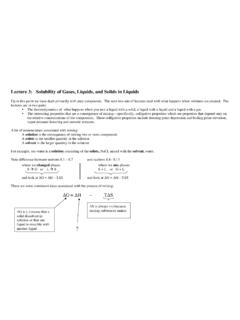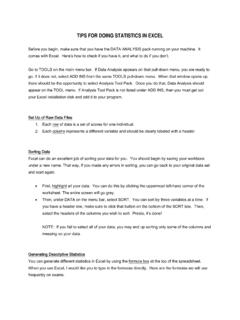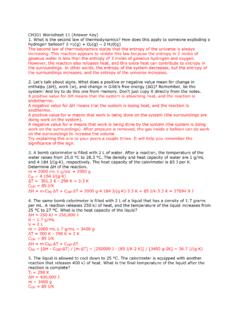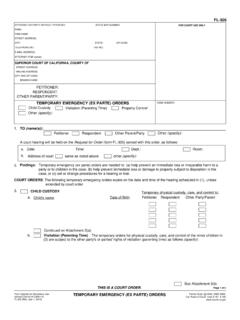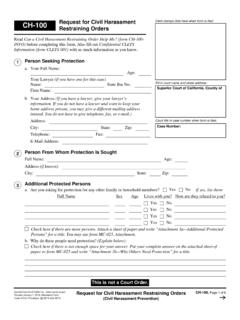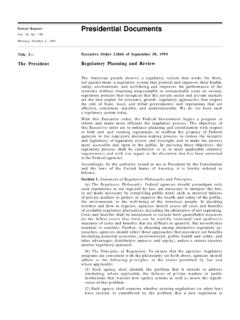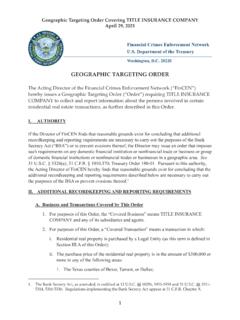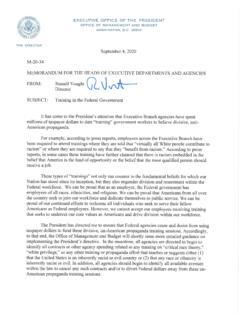Transcription of How to Determine Orders of Reaction
1 How to Determine Orders of ReactionIn many kinetics problems, the first order of business (a pun) is to Determine the order of a Reaction . The orderof a Reaction is simply the sum of the exponents on the concentration terms for a rate law:Rate = k[A]x[B]y Reaction order = x + yExample 1: Rate = k [A]1[B]0 = k [A] is 1st order in [A] and 0th order in [B] and 1st order for the 2: Rate = k [A]3[B] is 3rd order in [A], half order in [B] and order does the Reaction order tell us: We need to know the order of a Reaction because it tells us thefunctional relationship between concentration and rate. It determines how the amount of a compoundspeeds up or retards a Reaction .
2 For example, a Reaction order of three means the rate of Reaction increases asthe cube of the concentration. A Reaction order of -1 means the compound actually retards the rate Reaction order :Here are four ways to learn the order of Reaction from easiest to hardest:1. They tell you in the problem. "In the first order Reaction of .."2. You are given units for the rate constant. For example, if a Reaction is first order the units are reciprocaltime:Proof: rate = k [A]1 and rearranging, k = rate/M = (M/sec)/M = 1/sec = sec-1In other words, the order of a Reaction with k= x 10-2 min-1 is first the unit canceling yourself to find thatZero order1st order2nd orderk = Msec-1k = sec-1k = M-1sec-1 Remember, this only tells you the total order for the Reaction , not the individual Method of initial rates.
3 The favorite of every kinetics exam in general chemistry, you will be given aseries of varying concentrations and a rate and from this asked to Determine the individual and Reaction 1 Example 2 Example 3 Trial[A][B]rate[A][B]rate[A][B] x x x x x x overall235 overall0-1-1 overallIn each case, you set up a ratio of concentrations and rates to fit the expression: rate = k[A]x or rate = k[B]yand ask, what does the order x or y have to be to make the equation true?Example 1: hold [A] in trial 1 and 2 constant, thenrate2 /rate1 = k([B2]/[B1])y so 1x10-4/1x10-4 = k (.2/.1)y and y = 0. This is a 0th order Reaction in B. now hold [B] in trial 1 and 3 constant, thenrate3 /rate1 = k([A3]/[A1])x so 3x10-4/1x10-4 = k (.)
4 3/.1)x and x = 1. This is a 1st order Reaction in 2: hold [A] in trial 1 and 2 constant, thenrate2 /rate1 = k([B2]/[B1])y so 54x10-3/2x10-3 = k (.3/.1)y and y = 3. This is a 3rd order Reaction in B. now hold [B] in trial 1 and 3 constant, thenrate3 /rate1 = k([A3]/[A1])x so = k (.15/.1)x and x = 2. This is a 2nd order Reaction in 3: hold [B] in trial 1 and 2 constant, thenrate2 /rate1 = k([A2]/[A1])x so 5x10-5/5x10-5 = k (.1/.1)x and x = 0. This is a 1st order Reaction in A. It is not necessary to hold [A] constant because it is first order and the rate doesn't change with [A].rate3 /rate1 = k([B3]/[B1])y so = k (.2/.1)y and y = -1.
5 This is a -1 order in Reaction in this yourself for each example above. The answers are in the rows at the bottom of the Determining order from integrated rate equation. The final method for determining Orders is indirect andunlikely to be asked on a test, but it really shows whether you know your kinetics. Note that the integrated ratelaw solutions for zero, first and second order expressions are different functions but all can be written in theform of a straight line. This means that if I plot the concentration, [A], as a function of time for each expressionbelow, the correct order should yield a straight line function. For thrills lets do it for the data in a first orderreaction, but apply the functions for all three equationsZero orderFirst orderSecond order y = m x + b y = m x + b y = m x + b[C] = -ck t + [C0]ln [C] = -ck t + ln [C0]1/[C] = ck t + 1/[C0]300K concentration time data2nd order1st orderZero ordertime[C]1/[C]ln [C][C]0?
6 't this exciting, notice that the only one that is a straight line is first order , hence the Reaction is first order in[C]. Yet another way to find the order of a Reaction !!
